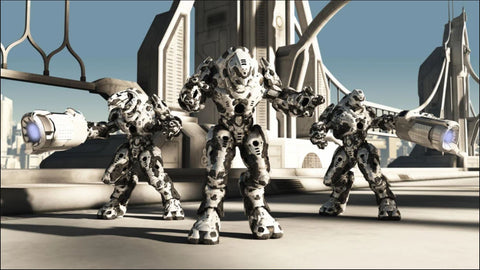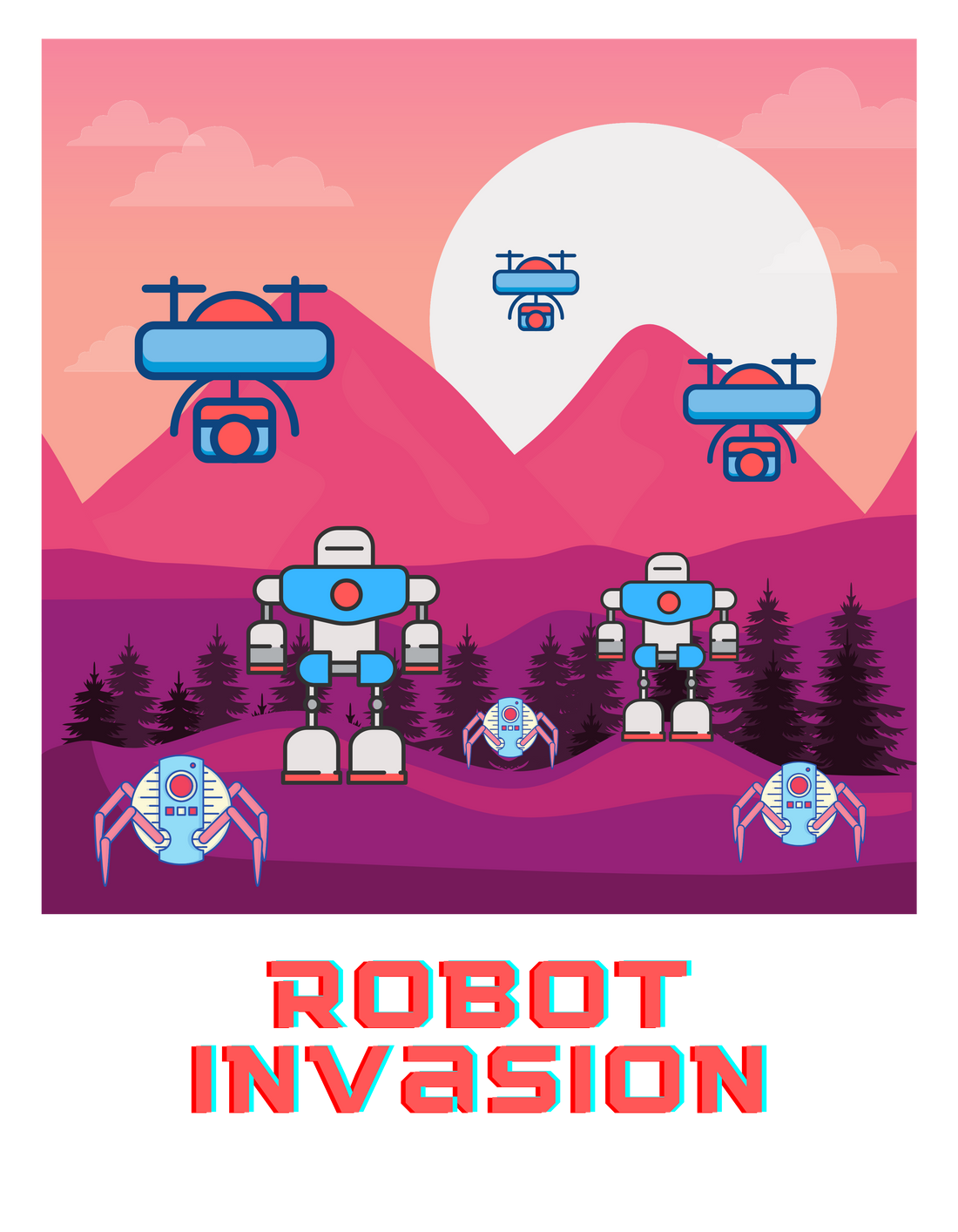WHAT ARE ROBOTS AND HOW IT IS A PART OF SCIENCE FICTION?
Advanced mechanics is the crossing point of science, designing, and innovation that produces machines, called robots, that substitute for (or reproduce) human activities.
Robots have been a backbone component in sci-fi for in excess of 100 years. Truth be told, the term 'robot' was authored in the 1920 play R.U.R. (Rossum's Universal Robots) by Karel Čapek, a Czech essayist. The word 'robot' finds its starting point in the Czech expression 'robota', which alludes to constrained work or bondage. Along these lines, even the beginning of the word 'robot' addresses their part in sci-fi. All through the sci-fi type, robots are constrained by their human makers. Robots are assembled and modified to satisfy specific jobs or assignments. Their starting point in the class is firmly connected to the Industrial Revolution, which saw a shift from human work to machine production. How mechanical innovation could misfire on people is a significant topic in the class.

Photo Credit: Old Star Wars Robot
THE NOVEL:
From the main novel to present the idea of robots (while never utilizing the word 'robot') to additional advanced contributions, robots have been a diversion staple for quite a long time. Be that as it may, when it boils down to these mind-boggling manifestations, does craftsmanship copy life? Is there a genuine justification behind concern, or is it simply sci-fi? To address this inquiry, you want to comprehend the beginning of robots in sci-fi and how this idea of mechanical creatures has been created close by innovation.
DO YOU KNOW ABOUT ORIGIN OF ROBOTIC SPECIES:
The word 'robot' doesn't show up by any stretch of the imagination in the novel, Samuel Head servant's 'Erewhon', distributed namelessly in 1872, is viewed as one of the main texts worried about the ascent of man-made brainpower. While the word 'robot' wouldn't be instituted for an additional 48 years, the word 'machines' is utilized all things being equal. This addresses the Head servant's motivation recorded as a hard copy of his book.
THE BOOK OF MACHINES:
In 'Erewhon', there are three sections known as 'The Book of the Machines', which manage thoughts of counterfeit awareness and machines that could self-duplicate themselves. Head servants believed that machines were at that point ready to reproduce themselves, yet more critically, it was people who customized them to do such.
These three previously mentioned sections draw on the prior thoughts of the Head servant, introduced in an article named 'Darwin Among the Machines', which was distributed nine years before 'Erewhon'. As the title of Steward's article recommends, Charles Darwin's 'On the Beginning of Species distributed in 1859, was a significant wellspring of motivation for Head servants. These thoughts were further a reaction to the Modern Upset, which saw the ascent of machines in the assembling business.

Photo Credit: The Book of the Machines
HOW THE ROBOTS REPLACED INDUSTRY WORKERS?
These machines in the Modern Unrest supplanted laborers who used to play out the necessary work physically. Machines supplanting people, becoming cognizant, or in any event, assuming command of their makers, has for some time been a worry in sci-fi that highlights robots. These sci-fi stories have created in intricacy as innovation has grown quickly since the arrival of 'Erewhon' over a long time back.
WHAT HAPPENS TO SOCIETY WHEN ROBOTS REPLACE WORKERS?
Those representing things to come, by filling in for man's faculties and cerebrum, will speed up that cycle - yet at the gamble of making a huge number of residents who are essentially unfit to contribute financially, and with more prominent harm to a previously declining working class.
CAN ROBOTS REPLACE HUMANS IN ALL ACTIVITIES?
Robots will not replace humans, yet, they will make us more astute and more productive. More than 3/4 of those surveyed (77%) trust that in fifteen years, man-made brainpower (man-made intelligence) will altogether accelerate the dynamic cycle and make laborers more useful.
MORE ABOUT ROBOTS FROM PAST YEARS
WEST WORLD FROM 1973 TO 2016 AND EVERYTHING IN-BETWEEN
West world is maybe one of the most amazing current instances of how our perspectives and fears concerning robots have been created close by innovation. Delivered around 100 years after Samuel Head servant's 'Erewhon', the 1973 film 'West world' - with a screenplay by Michael Crichton, who made Jurassic Park - was the principal film to use PC-produced symbolism. This by itself addresses how much innovation has been created since the arrival of the 'West world film. Nowadays, CGI is found all over the place, from blockbuster Hollywood motion pictures to promotions on the little screen. To cite Samuel Steward's 'Erewhon': "Consider the exceptional development which machines have made during the last scarcely any hundred years, and note how gradually the creature and vegetable realms are progressing".
Like the 2016 HBO TV adaption, the first 'West world film is about an amusement park populated with androids, which are robots intended to look like people. While both the film and 2016 series are basically about these androids failing and jeopardizing the amusement park visitors, their ways to deal with their stories vary enormously. The 2016 adaption utilizes a more nuanced approach, thinking about the perspective of the android that is ceaselessly tormented by the visitors. As a matter of fact, numerous watchers might think about the androids as the heroes of the 2016 series.

Photo Credit: Stock Photo Robot Artist
HOW CAN A ROBOT MAKE YOUR LIFE EASIER?
In addition to the fact that robots are ready to work with better precision, which decreases how much time and materials are squandered, they can likewise work quicker (and longer) than people can. While this can hurt the positions that individuals depend on, it additionally, by lower fabricating costs, makes the cost of the merchandise less expensive.
DO YOU THINK ROBOTS CAN ACTUALLY POSE A THREAT TO SOCIETY?
In 'Diversion', Asimov proposes a bunch of three guidelines that can be utilized to oversee robots. These standards dislike decisions that oversee people. All things being equal, they are rules established in programming by which they can keep robots from actually hurting people. These standards were created to safeguard people when they are cooperating with robots. The three regulations are as per the following:
- 1. A robot may not harm an individual or, through inaction, permit a person to come to hurt.
- 2. A robot should submit to the orders given to it by individuals except where such orders would struggle with the Principal Regulation.
- 3. A robot should safeguard its presence at the same length as such security doesn't struggle with the First or Second Regulations.
These regulations were additionally evolved by Asimov and different journalists throughout the long term, and Asimov even accepted they could be utilized as a general rule. In any case, there have been many studies of these regulations and how they neglect to safeguard people sufficiently. Asimov's fiction, as well as innumerable other sci-fi accounts about robots, manages how these regulations can bomb individuals.
Photo Credit: iRobot Movie
HERE ARE SOME SCI-FI MOVIES BASED ON ROBOTS:
- Big bug
- Pacific rim
- Transformers (age of extinction)
- War of the worlds
- Space sweepers
- Passengers
- Bumblebee
- Next gen
CONCLUSION
Robots are captivating, both genuine and fictitious. Robots in sci-fi are generally a reaction to the Industrial Revolution and the ever-mechanically developing society we live in. Robots in sci-fi are the two signs of our current feelings of dread in regards to atomization and useful examples about what could turn out badly down the line. Whether you need to peruse more about fictitious robots or do more examination into the genuine kind, there are a lot of assets to utilize. Consistently new jumps are made in the field of advanced mechanics, so you won't run out of perusing!
For Unique SCI-FI merchandises, visit our website https://telbises.com/


